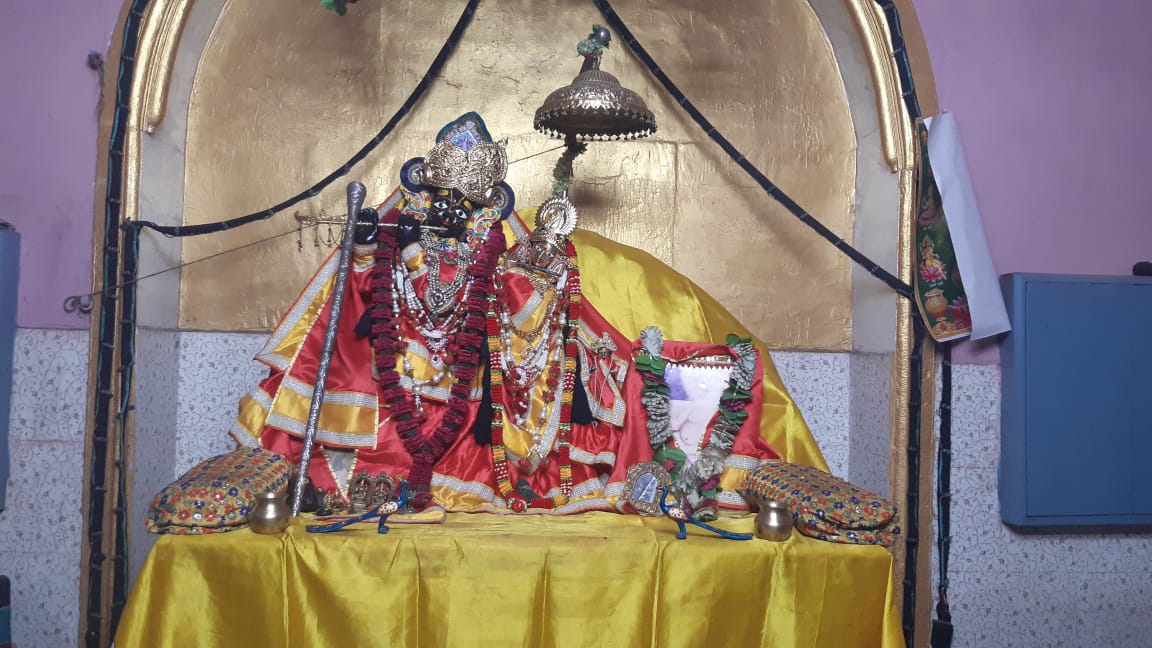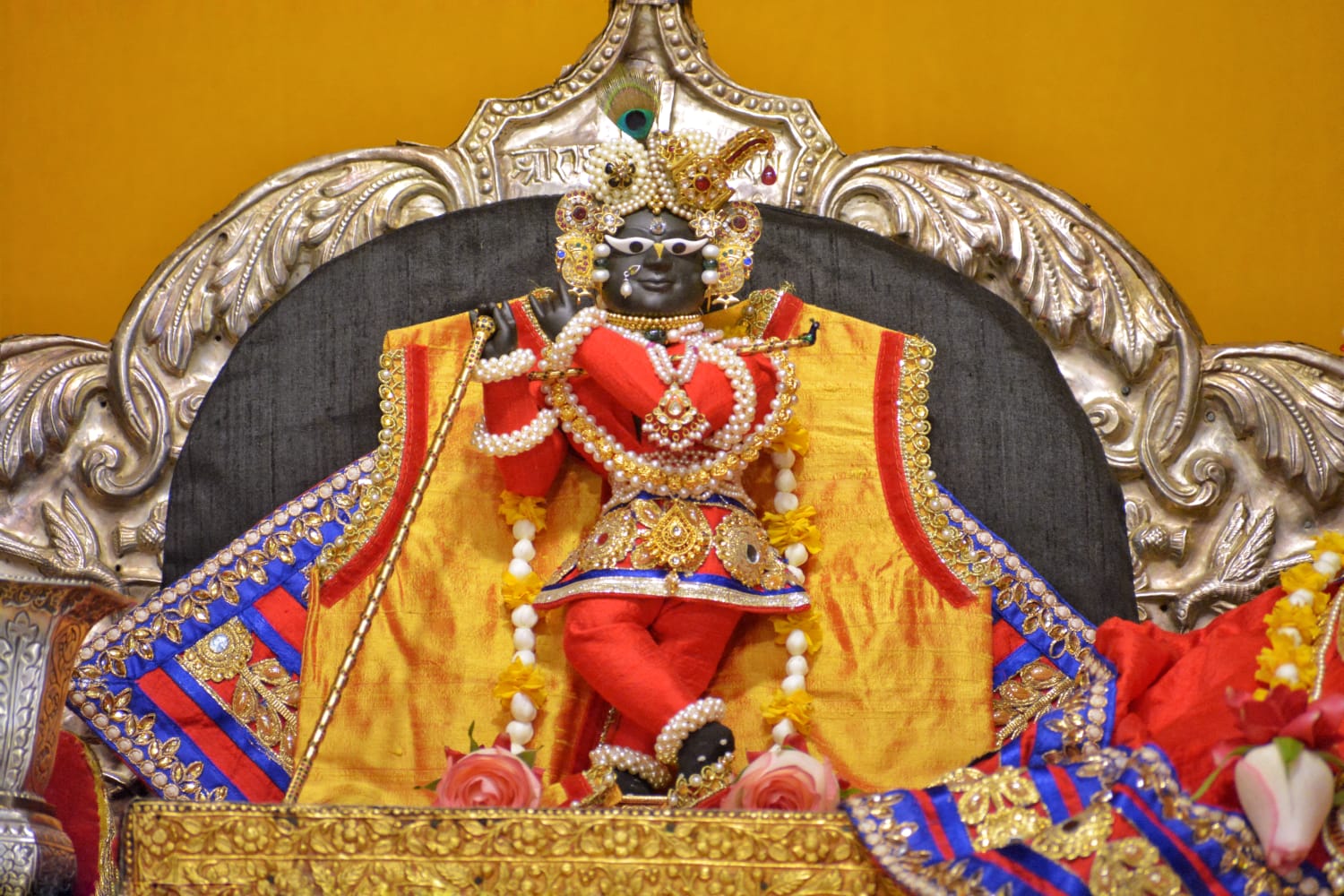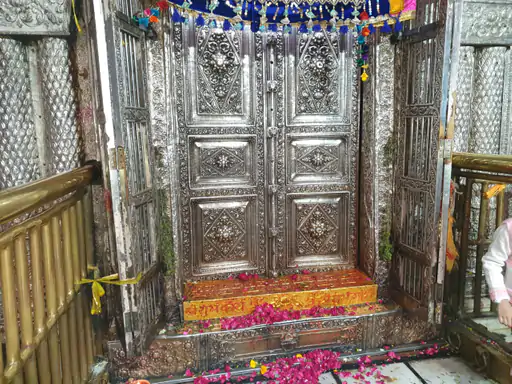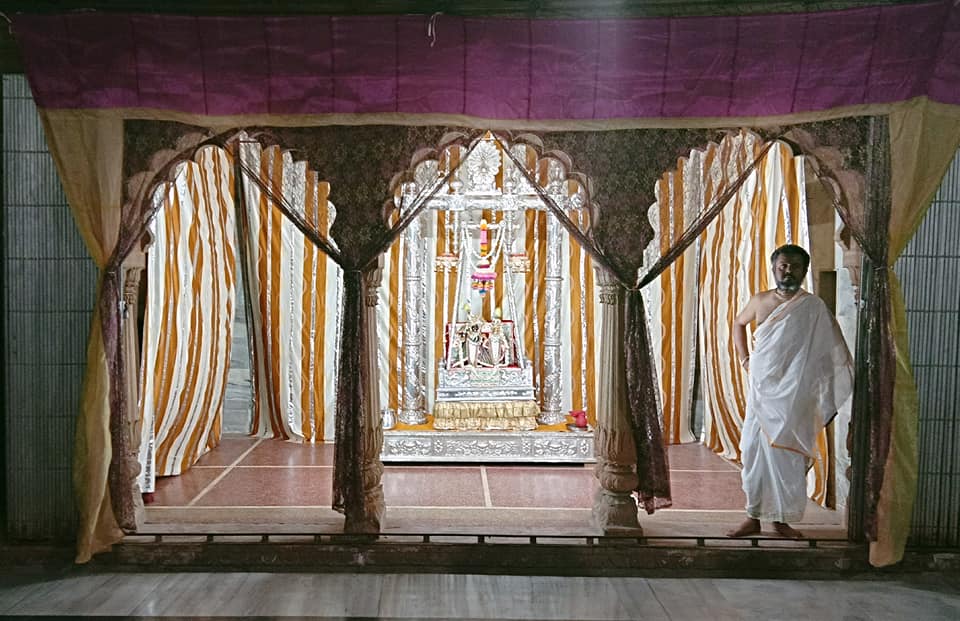Along with Bansidhar Krishna, Shri Radha can also be seen playing the flute in tribhanga mudra here.
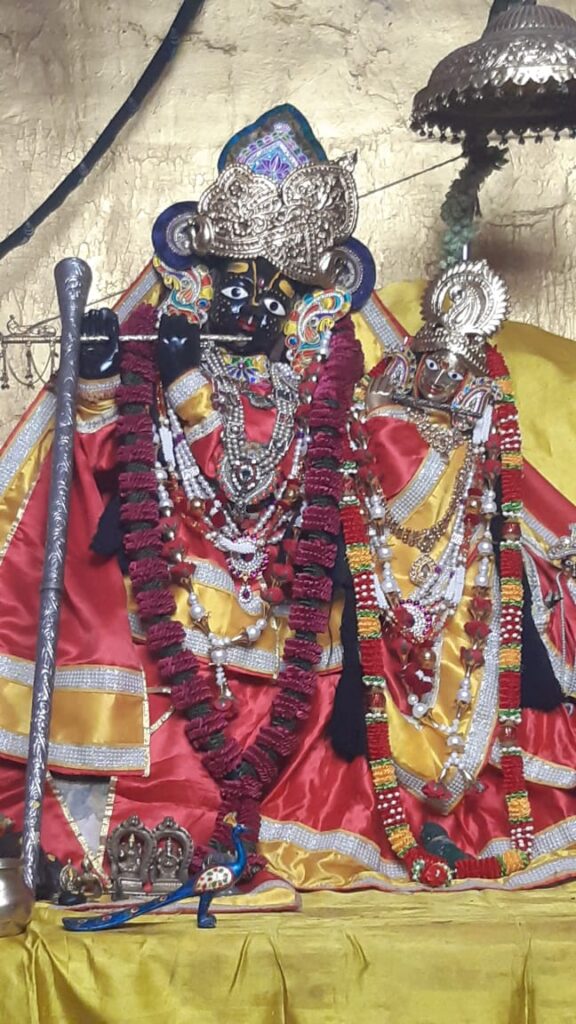
Vrindavan, 2021-11-08 (Vrindavan Today News): The graceful ‘tribhanga’ form of Krishna has enticed countless minds and souls with the bewitching sounds of His ‘bansi’. However, there’s one such temple in Vrindavan where along with Him, Shri Radhika can also be seen playing the flute in the tribhanga mudra – the Shahjahanpur Temple.
This little known temple is unique not just for its flute-holding vigrahas of Shri Shri Radha-Govind, but also for its remarkable design and architecture which is sadly lost in the clamor of shops and electrical wiring.
Shahjahanpur Mandir belongs to the Lalit Sampradaya which reveres Lalita Sakhi as Guru. The seva is of ‘saat (seven) aarti, saat bhog’. Bhado Maas and Khichdi Mahotsav (observed during the winter months) are among the important festivals celebrated here.
Located in Pratap Bazaar area, the shrine was built by Lala Braj Kishore, a rich treasurer from Shahjahanpur, in 1873. The ornate entrance made in Jabalpuri style is flanked by carved figurines of young maidens that have earned the temple the title of ‘putliyon wala mandir’. The doorway leads to a spacious ‘jagmohan’.
On one hand in the ‘garbha griha’ is Bansidhar Krishna wearing an artificial braid (chutila), and on the other is Kishori ji sporting a crown (mukut) like Him.
The temple has a bagicha (garden) in Ramanreti where Gaudiya Sadhus live at present. There’s also a ‘kunj’ at Cheer Ghat and an affiliated goshala and aushadhalaya (dispensary)
During the days of zamindars (landlords) the shrine was well taken care of. Obscured by the ravages of time and modernity, today the caretakers have to rent out the shops to make ends meet.
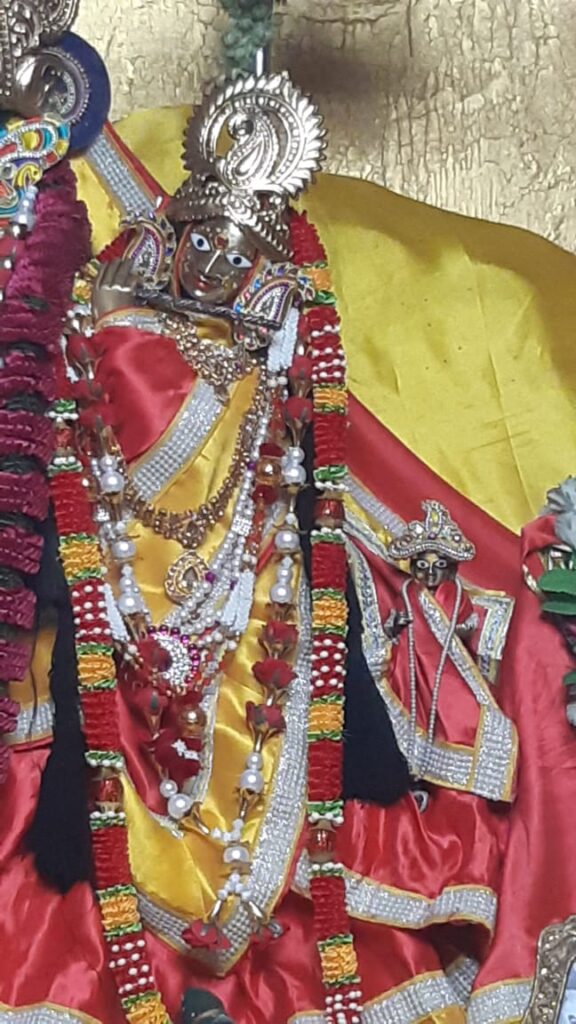
About Shri Vamsi Ali ji and Lalit Sampradaya (by Shri Jagadananda Dasa)
Vamsi Ali was born in a well-to-do Vaishnava brahmin family in Vrindavan in 1708 (1764 Vikram), Ashwin Shukla Pratipat. He had a famous forefather named Mishra Narayan, who lived in the 16th century in Braj and earned his reputation by speaking on the Bhagavatam. Vamsi Ali was his ninth generation descendant. His birth name was Vamsidhar Mishra. His father, Pradyumna, was quite well known in the court of Bahadur Shah, Aurangzeb’s oldest son.
Vamsi Ali was something of a child prodigy and became quite a Bhagavata speaker in his own right. He even spoke at the Maharaja of Jaipur Savai Singh’s palace, answering his questions with such ease that the Maharaja was quite impressed and bestowed many gifts on him.
At fifteen, Vamsi Ali was married and he had his first child five years later. His main duty at home was to take care of the family deities, temple and temple-related property. He spent most of the money on the annual Radhashtami festival. He kept on speaking the Bhagavata, overwhelmed with prema. By the time he was 30, he left home. Four years later he began well known as a devotee in sakhi-bhava. He died at the age of 58, in 1764 at Lalita Kunj near Govinda Ghat in Vrindavan.
Vamsi Ali’s disciplic line belongs to the Vishnuswami sampradaya. So they have the nupur tilak that extends halfway down the nose, usually made out of gopi chandan. They place a bindu between the eyes, but they print the devanagari letter for Sri (श्री) higher up on the forehead between the upright lines. (Krishna-bhakti kavya men sakhi bhava, 691-2)
His understanding of Krishna is a little unusual. The following is a translation from the Hindi of Babulalji Goswami (p.83)
“Radha is full of compassion. She only grants her presence to devotees in their meditations. She is herself without form and pure light, but being under the sway of her devotees, she manifests a form for their sake. The purpose of her expanding her pastimes is to give pleasure to her devotees and to increase their attachment for her. She is always under the control of her devotees. For these reasons she is always fixed in her pastimes and especially with her supreme devotee Krishna, with whom she enjoys (ramana) in a state of oneness (samatā-bhāva).
nityaṁ bhakta-parādhīnā tena rādhā vihāriṇī
sāmyaṁ bhajati bhaktena rase kṛṣṇena līlayā
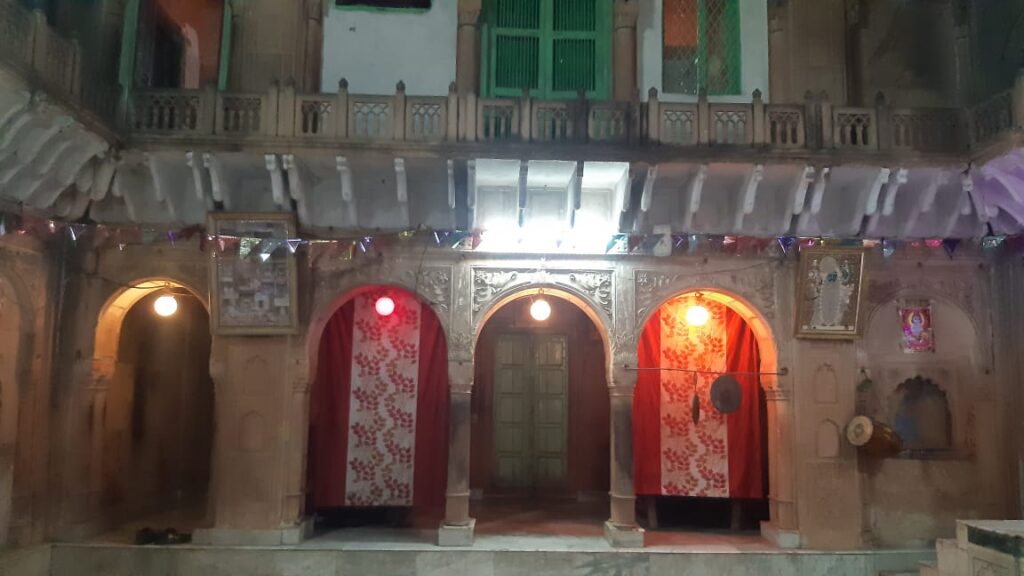
Radha, the enjoyer of pastimes, is always under the thrall of her devotees. In her pastimes she becomes one with her devotee Krishna in relishing rasa. (Rādhā-siddhānta, verse 21)
vṛṣabhānu-gṛhe janma kṛpayā sādhakān anu
līlāvirbhāvatas te vai nānā-bhāvādhikāriṇaḥ
Radharani takes birth in the home of Vrishabhanu Maharaj in order to give her blessings to her devotees. This is because her appearance gives so many persons the opportunity to develop the various different moods of devotional service, such as dāsya and vātsalya. (Rādhā-siddhānta, verse 28)
Those who worship Radha in the kunja, i.e. her most intimate and erotic pastimes, say that there are four elements that make this lila (also known as nitya-vihāra possible. (1) Radha and (2) Krishna’s absorption in their intimate pastimes, (3) their friends and sakhis, (4) Vrindavan, the place of their activities.
“In the previous discussion, Krishna’s name came up again and again, which has in great part made his position clear. Nevertheless, it is necessary to elaborate a little more on his identity (svarupa). According to the Lalita Sampradaya, Krishna has no standing at all in Vraja lila. [* Vamsi Ali divides the lila into Vraja, ] Even in the Maharasa, he is present in a hidden form and not directly. (pp. 88-89)
In Vamsi Ali’s conception, Radha is the “pati” of Lalita, Visakha and the other sakhis, who consider themselves her “brides” (suhagavati).


